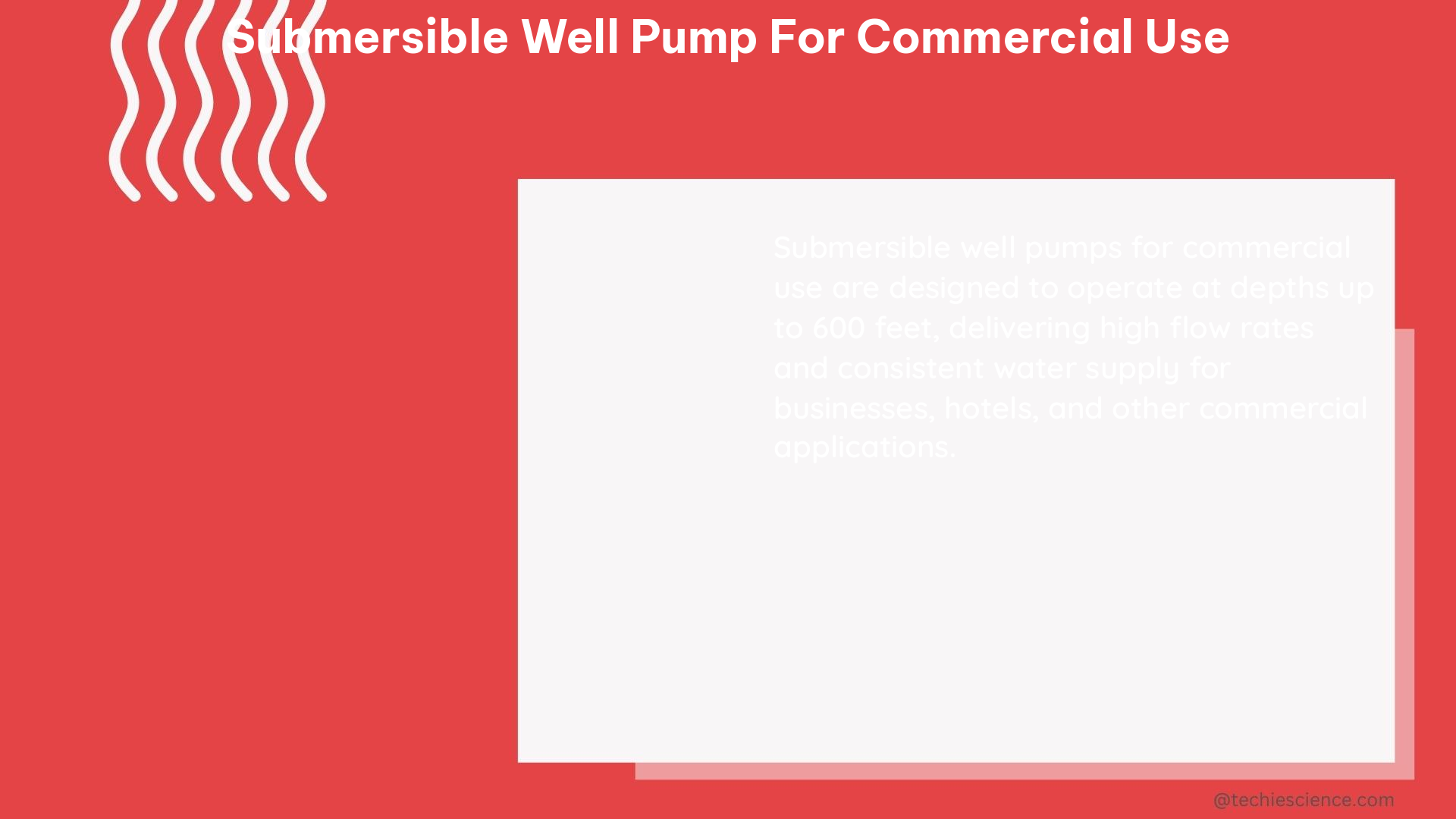Submersible well pumps are the backbone of commercial water extraction, powering a wide range of applications from irrigation and industrial processes to municipal water supply. This comprehensive guide delves into the technical specifications, design considerations, and DIY installation tips for selecting and implementing the perfect submersible well pump for your commercial needs.
Types of Submersible Well Pumps
Submersible well pumps are classified based on their design and intended application. The three main types are:
- Centrifugal Pumps:
- Suitable for shallow wells up to 25 feet deep
- Simple design with a single impeller
- Typical flow rates range from 5 to 500 GPM
- Head capacities up to 200 feet
-
Horsepower typically between 1/2 to 10 HP
-
Jet Pumps:
- Suitable for deeper wells up to 100 feet
- Consist of a centrifugal pump and an ejector
- The ejector creates a vacuum to lift water
- Flow rates range from 10 to 100 GPM
- Head capacities up to 400 feet
-
Horsepower typically between 1 to 5 HP
-
Submersible Pumps:
- Designed for deep wells over 100 feet
- Fully submerged in the well
- Multiple stages of impellers to lift water
- Flow rates range from 50 to 5,000 GPM
- Head capacities up to 1,000 feet
- Horsepower typically between 5 to 100 HP
Technical Specifications

When selecting a submersible well pump for commercial use, it’s crucial to understand the key technical specifications that will determine the pump’s performance and suitability for your application.
Horsepower (HP)
The horsepower of the pump motor is a measure of its power output. For commercial applications, submersible well pumps typically range from 1/2 HP to 100 HP, with higher horsepower models capable of handling larger water demands and higher total dynamic heads.
Flow Rate (GPM)
The flow rate, measured in gallons per minute (GPM), represents the volume of water the pump can move per minute. Commercial submersible well pumps can have flow rates ranging from 5 GPM to 5,000 GPM, depending on the size and application.
Total Dynamic Head (TDH)
The total dynamic head is the total height the pump must lift the water, including friction losses in the pipe. For commercial submersible well pumps, the TDH can range from 5 feet to 1,000 feet, depending on the depth of the well and the water distribution system.
Motor Voltage
The voltage required to operate the pump motor is an important consideration. Commercial submersible well pumps typically use 115V, 230V, 460V, or 575V motors, depending on the power requirements and local electrical infrastructure.
DIY Perspective: Selecting and Installing a Submersible Well Pump
When it comes to selecting and installing a submersible well pump for commercial use, there are several key steps to consider from a DIY perspective:
- Estimate the Required Flow Rate:
- Determine the total water demand for your commercial application
- Consider factors such as irrigation needs, industrial process water requirements, and fire suppression system demands
-
Use industry-standard formulas and calculators to estimate the required flow rate
-
Determine the Total Dynamic Head (TDH):
- Measure the vertical distance from the pump to the highest point of water use
- Account for friction losses in the pipe by using industry-standard friction loss tables or calculators
-
Ensure the pump’s TDH capacity matches or exceeds the calculated total dynamic head
-
Select the Appropriate Pump Size:
- Choose a submersible well pump with a horsepower, flow rate, and TDH capacity that meets your commercial requirements
- Consider factors such as energy efficiency, durability, and compatibility with your existing water distribution system
-
Consult with pump manufacturers or industry experts to ensure the selected pump is suitable for your application
-
Install the Pump:
- Follow the manufacturer’s instructions for proper installation, including sealing, wiring, and anchoring the pump
- Ensure the pump is properly aligned and secured to prevent vibrations and premature wear
- Implement necessary safety measures, such as ground fault circuit interrupters (GFCIs) and proper electrical grounding
By carefully considering these DIY steps, you can select and install the perfect submersible well pump to meet the water demands of your commercial operation, ensuring reliable and efficient water extraction for years to come.
References:
- Practical Machinist Forum: Sizing a Water Well Submersible Pump
- Envisupply: About Well Pumps
- Instructables: Diagnose and Replace a Submersible Well Pump
- LinkedIn: What Data Should be Calculated When a Deep Well Pump is Used
- EPA: Measurable Goals

The lambdageeks.com Core SME Team is a group of experienced subject matter experts from diverse scientific and technical fields including Physics, Chemistry, Technology,Electronics & Electrical Engineering, Automotive, Mechanical Engineering. Our team collaborates to create high-quality, well-researched articles on a wide range of science and technology topics for the lambdageeks.com website.
All Our Senior SME are having more than 7 Years of experience in the respective fields . They are either Working Industry Professionals or assocaited With different Universities. Refer Our Authors Page to get to know About our Core SMEs.